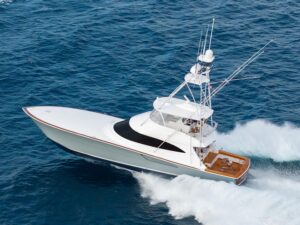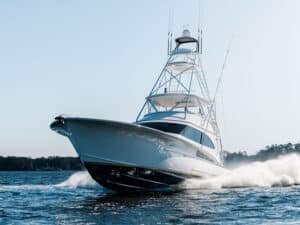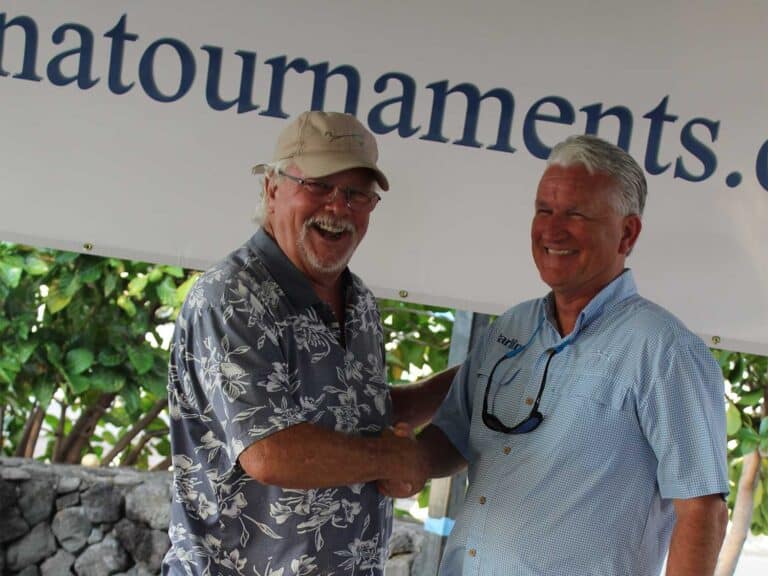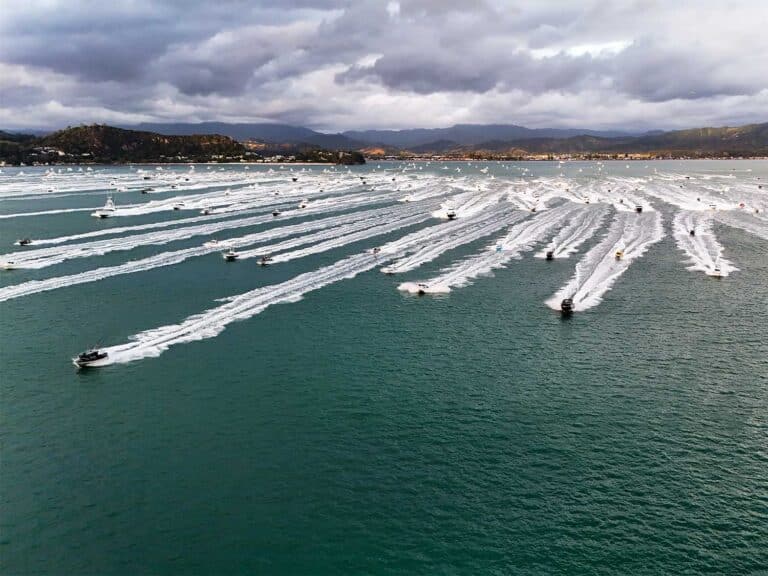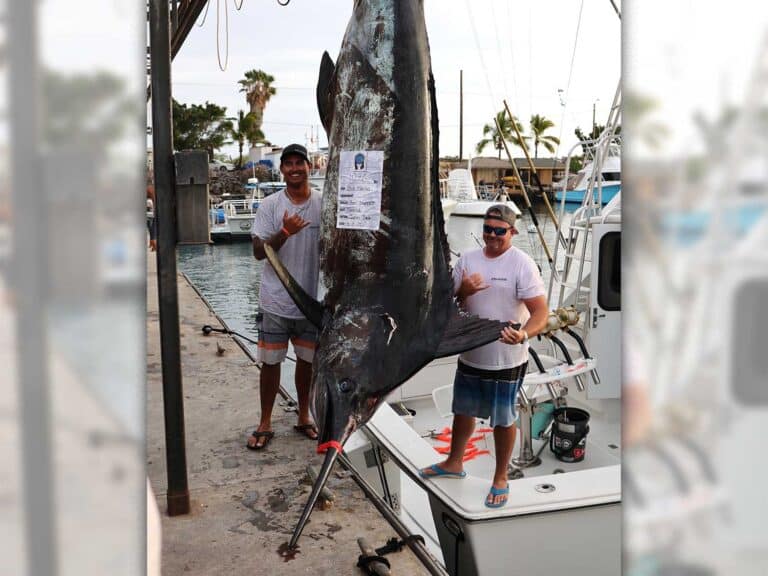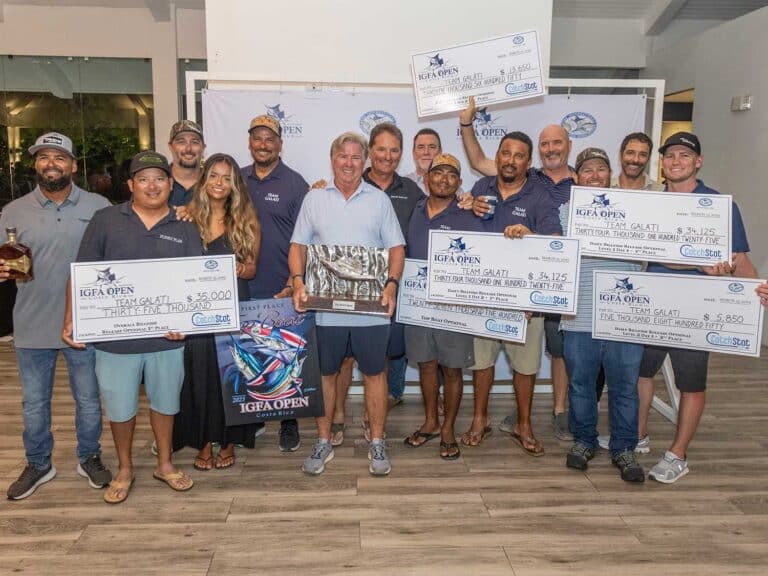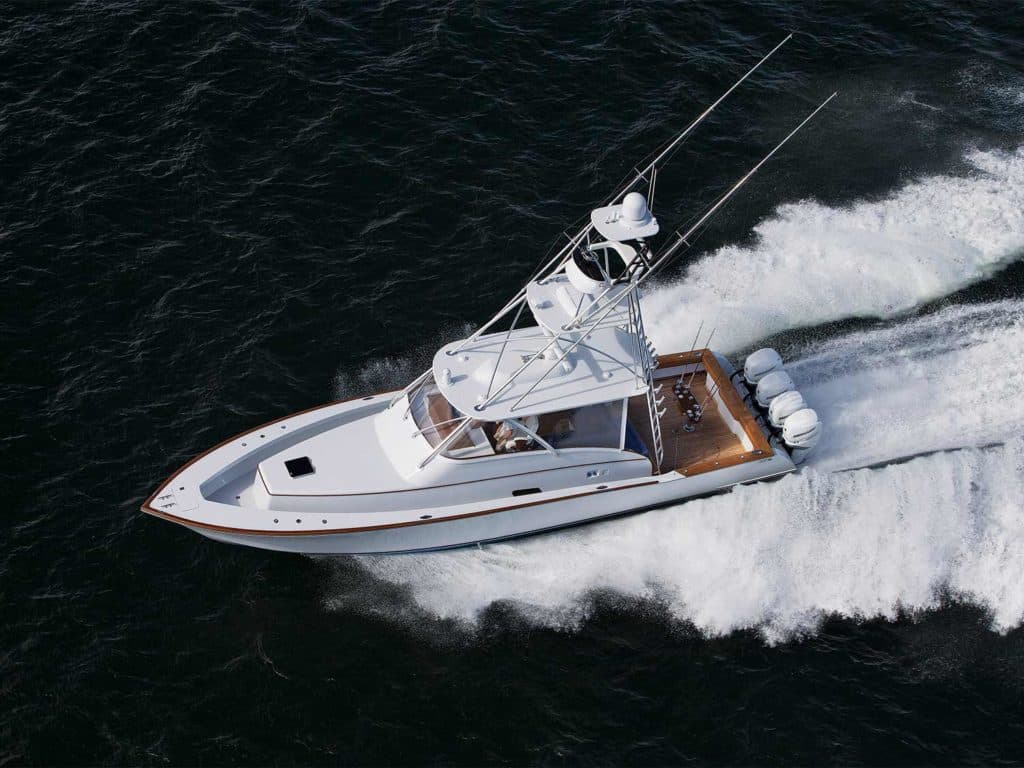
Even just a handful of years ago, if you wanted a custom sport-fisher in the 35- to 55-foot range, the likely option was inboard power. But today’s new breed of high-horsepower outboard engines, with their greatly improved efficiency and overall reliability, means that outboards are now a serious consideration. Let’s take a closer look at a few custom boatbuilders who are leading the shift in power.
The Target Audience
Gamefisherman has always been on the leading edge of technology, so it’s no surprise that the popular Florida builder has joined the fray with outboard-powered models, in addition to its existing lineup of inboard boats. The company is building two models—a 46- and a 50-footer—and both are walkaround designs with quad outboard power.
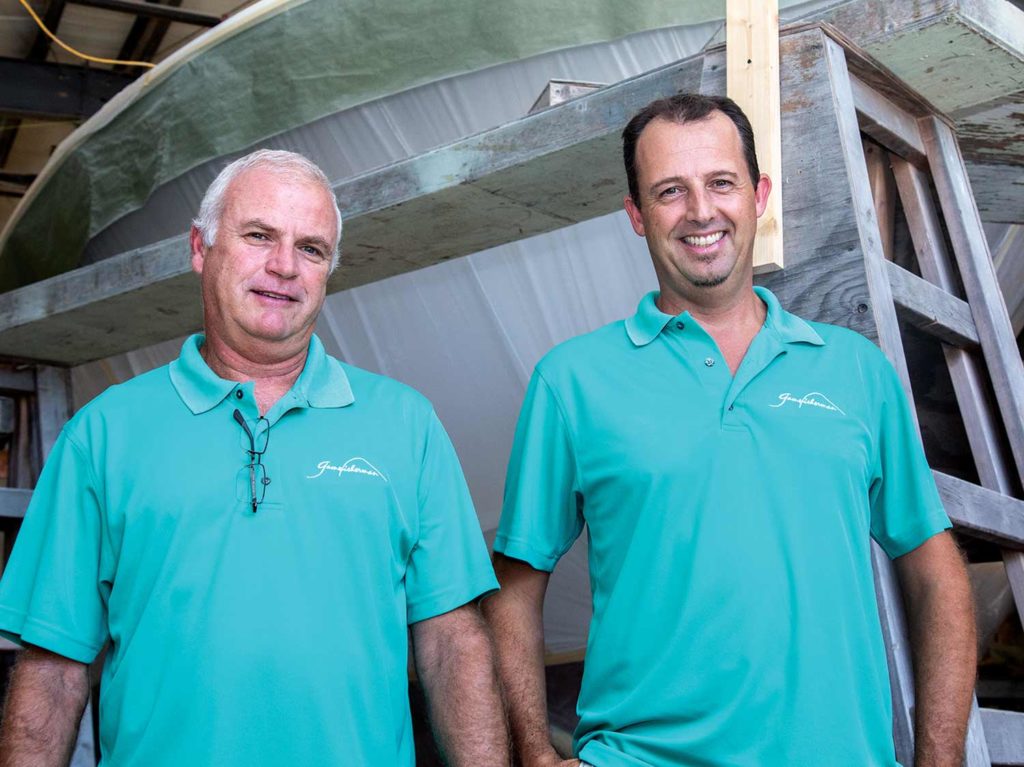
“There are really three types of buyers who come into our shop looking for a boat like this,” says Gamefisherman partner Scott Dunnuck. “The first is an owner-operator who is used to having outboards on a big center console, but now they want more comfort, sleeping arrangements for longer trips, and more protection from the elements than you get in an open boat. The second person is someone downsizing from a bigger convertible. They want something they can run themselves, but that has the look and feel of a custom boat. And the third is looking for a tender to tow with a mothership or motoryacht: They want to do all kinds of fishing, but they also want to go cruising, diving and island hopping, too.”
Naval architect Erwin Gerards, designer of the new Gamefisherman models, quickly notes the many benefits of outboards when compared to inboards for boats in this size range.
“The new engines are reliable and have a higher horsepower-to-weight ratio,” he says. “They also offer ease of maintenance and, with the new steering systems, they are easier to dock—more like an inboard—so people are less nervous than they used to be. Most of these owners are very familiar and comfortable with outboard boats. And for the owners who are downsizing from a larger sport-fisher, they love the fact that they don’t have to deal with issues in the engine room, because there isn’t one.”
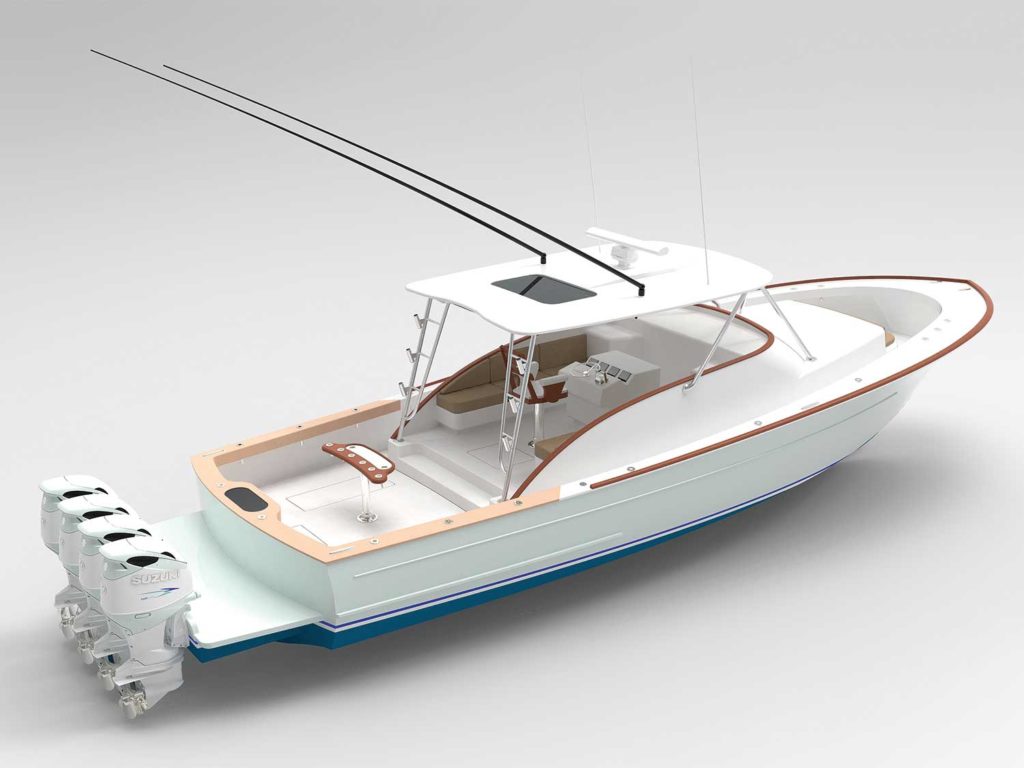
Many new outboard-powered customs have a walkaround design, which lends itself to a variety of angling pursuits, from kite-fishing and trolling to deep-dropping and drifting, among others. Trips to the islands with the family are much easier, thanks to the shallow draft and ability to trim the engines out of the water. The wide walkways to the bow mean that no one has to work their way around the outriggers to handle the bow lines, either. And they have a much higher level of comfort than a hardcore open center console boat.
“The 46 can sleep four, with air conditioning, and the 50 we’re building now can be configured to sleep six, with a full queen, two staterooms, two heads and a shower that’s large enough to be functional,” Gerards says. “Fuel capacity is also important. The 46 holds 600 gallons, and the 50 will have an 800-gallon capacity, so long-range cruising isn’t a problem.” Rigging time is reduced by 15 to 20 percent as well, because there are no shafts to align or struts and rudders to install.
Expanding the Lineup
Jim Smith Tournament Boats is another Florida builder crafting high-end outboard-powered boats alongside its bread-and-butter custom convertible vessels in the 75- to 80-foot range.“Our first one was for a current client in a 60-footer with inboards. He asked if we could build a 45 with outboards,” says company president John Vance. “That was in 2015 and since then we’ve done three 45s. They have most of the same features as the bigger boats: air conditioning above and below deck, chiller plates in the fish boxes, custom refrigeration, gyrostabilizers, you name it.”
He also sees clients who want outboard boats either as tenders to larger vessels or for owner-operators progressing up or down through the boat ownership ranks.
“Outboards have definite-ly given the boatbuilders more options in boats up to about 55 feet or so,” he says, although he stresses that these are not center consoles. “Our 45 has a beam of 14½ feet, and the deadrise at the transom is only 17 degrees. That boat will plane comfortably at 18 knots, which is more like a diesel boat, while a deep-V hull requires a lot more horsepower to make it perform as it was intended.”
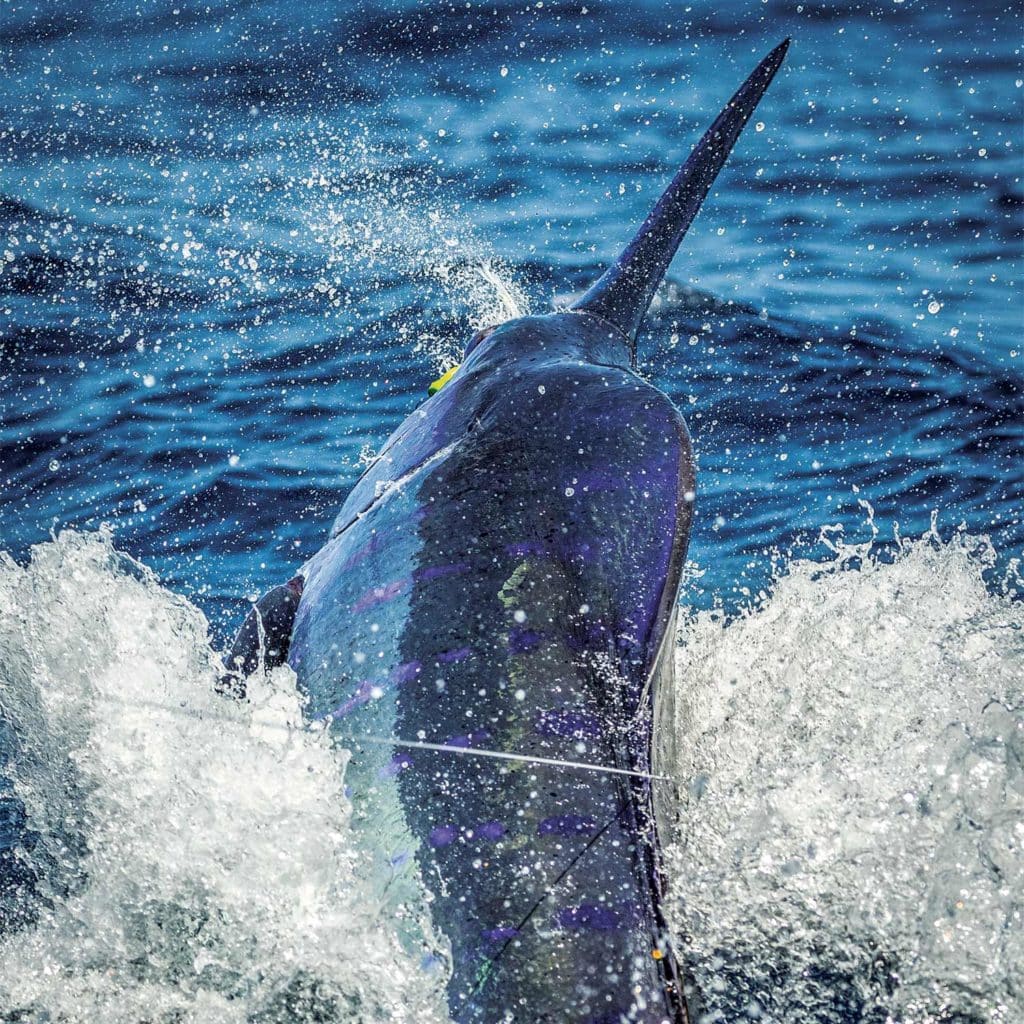
Vance also touts the ease of maintenance as a key advantage. “It’s just six bolts holding the motor to the boat’s transom. If you score a piston on an inboard, you could be stuck in the boatyard for a month,” he points out. “We have a customer who tournament fishes extensively, and he puts about a thousand hours on his motors every two years—swapping them out for a new set so that he always has fresh power. With outboards, it’s plug-and-play, especially with the new controls.”
Pricewise, the numbers are somewhat similar, although Vance notes that outboards also do not include the additional cost of shafts, rudders, struts and all the other gear required to rig an inboard boat. “Outboard engines have only about 5 percent slippage,” he says. “Inboards will make more horsepower with less fuel, but they have about 15 percent slippage by the time you consider the additional drag from the running gear. Overall, outboards are more efficient.”
He also relates how geographical preference often comes into play. “Here in Florida, we have a lot of people who want to fish on Saturday and then take the boat to the local sandbar with the family on Sunday,” he says. “That’s a lot easier in an outboard boat, where you can trim the engines up. In places such as the Northeast where you’re running 100 miles to fish the canyons, outboards might not make as much sense for that purpose.”
The Costa Rica/Gulf Coast Connection
Maverick Yachts in Costa Rica is building an outboard-powered variation of its 36-foot walkaround. Thanks to a partnership with Saunders Yachtworks, Maverick hulls can be shipped to the Saunders facility in Gulf Shores, Alabama, to be completed. With the addition of a bracket, the 36 becomes a 39-foot outboard, the first of which will be powered by triple Yamaha 300 hp engines.
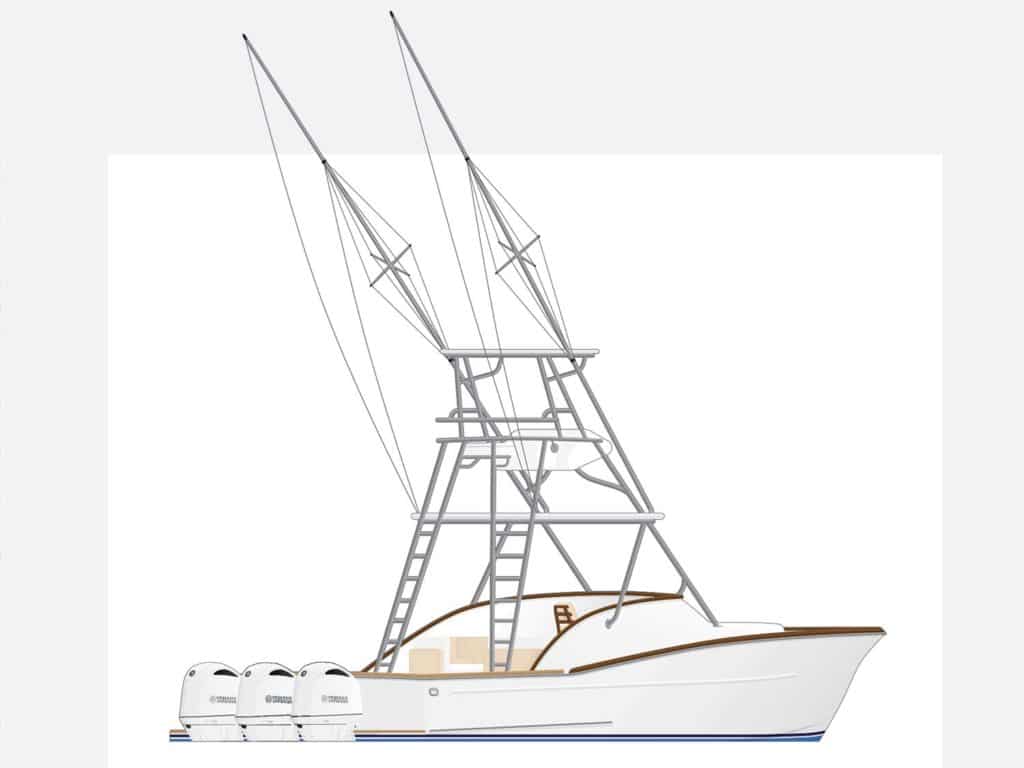
“In recent years, we have seen the market on the Gulf Coast trending toward outboard boats as they continue to increase in popularity,” says Saunders marketing manager Ashley Rainer. “We are big supporters of the offshore tournament circuit in the northern Gulf of Mexico, and when I joined Saunders in 2011, an outboard-powered boat entering a high-stakes billfish tournament was virtually unheard of. Now, we see them much more often in every tournament.”
The new Maverick 39 will have a long list of custom features, notably a marlin tower, full helm enclosure with air conditioning, Burma teak cockpit and covering boards, an upgraded 7kW generator, Seakeeper 6 gyrostabilizer and more, along with Maverick’s cold-molded construction and beautiful mahogany brightwork for which the company’s conventionally powered inboard models are notably famous.
Stronger is Better
Speed is one consideration that each builder mentioned as a benefit. The Maverick 39 is expected to be a 45-knot-plus boat with triple 300s, while Vance feels the new Jim Smith also could see better than 45 knots with quad 350 outboards. However, this adds another consideration: hull strength. “A 25,000 to 30,000-pound outboard boat can launch out of the water,” he says. “Our big boats are built with a 3G hull, but the smaller ones are designed to withstand 5G’s. The stringers and bottom are just as beefy as in a 70-foot sport-fish, so it gives you a big-boat feel.”
Both of the new Gamefisherman models should be 45-knot boats, and while the 46 is cold-molded and the 50 will be all-composite, both hulls are reinforced. “You have to consider the slam loads on the hull,” Gerards says. “We use an extra stringer as well as extra lamination and a heavier, higher-density core on the hull of the composite boat for that reason.”
Jet-Lagged Inspiration
On vacation in Kona, Hawaii, boatbuilder Donnie Caison found himself drawing up plans for a 38-foot walkaround after waking up at 3 a.m. each morning. “First I drew it up with inboards, then with outboards,” he says. “I put both designs out on social media and the response was 10 to one for outboards.”
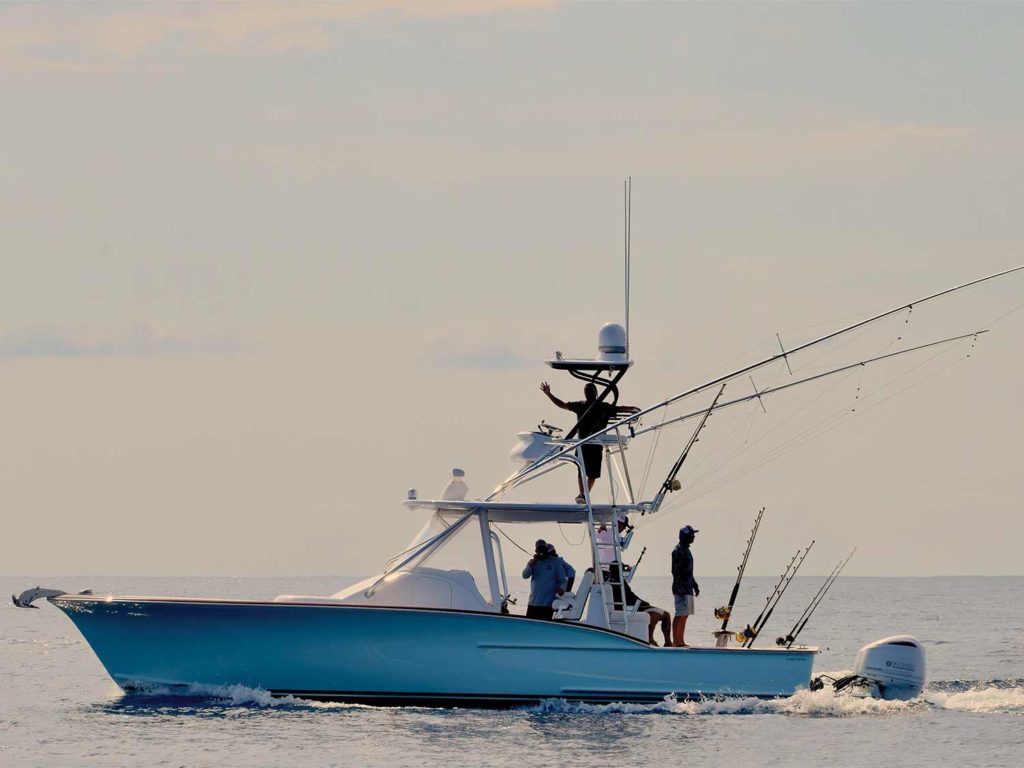
He built the boat with triple 300 hp Yamahas in 2017 and put it on the boat-show circuit, finally selling it in May 2018 to its current owner, who uses the boat as a tender to a 130-foot Berger motoryacht. “She had all the big-boat gear: Eskimo ice machine, tuna tubes, air conditioning, teak decks, faux-teak toe rail, satellite television—all the systems and details of a 60-footer,” Caison says. “We went through countless hours of weight study to make the hull perform well as an outboard or inboard. It’s all where you place the equipment, mainly the generator and the Seakeeper. The fuel is also farther forward in the outboard-powered boat.”
The Caison 38 has the engines mounted with an integrated bracket so the boat’s running surface extended all the way aft to the engines. “The design loses a little bit of space in the cockpit so you can trim the engines up, but it’s a better way to achieve the correct balance and not lose any flotation at the back of the boat,” he says. “And you still have the feel and ride of a cold-molded custom boat even with outboard power.”
The Drawbacks
As with anything else, there are always negatives to go with the positives.
Dunnuck is the first to point out that you lose the ability to access the transom when fishing. “Traditionalists always want to back down, but with a walkaround it’s much easier to fight a marlin or sailfish from the side or the bow of the boat,” he says, noting that the pointy end goes through the water far better than the square end.
And many will say that outboards just don’t raise blue marlin like the low-frequency thrumming produced by a pair of inboard diesel engines. Size is also a limiting factor for outboards, because they lose efficiency in multiple-engine configurations.
“These are high-horsepower, high-rpm engines that can only turn a propeller of a certain size,” Gerards says. “Maybe one day in the future, an outboard manufacturer will build an engine with more torque and swinging a larger prop, but right now there is no incentive to build that animal, so boat size is constrained.” Each of the builders agreed on this point.
And finally, there are the aesthetics. Purists will simply say custom sport-fishers just don’t look right with outboards on the transom. But each boatbuilder notes that these objections are also slowly fading with time.
Outboard power isn’t for everyone, but it does offer some impressive benefits in certain applications. And just having a seriously viable option is a choice that didn’t exist five years ago.
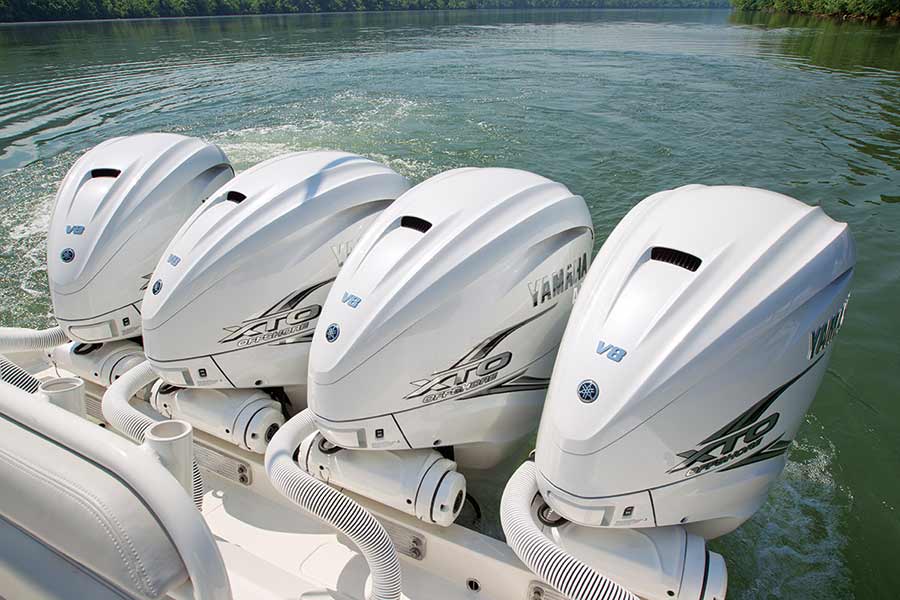
The Power Players
Several outboard manufacturers now produce engines topping 350 hp, and some have seriously stretched the boundaries, incorporating new technology to design engines making north of 400 horses. Reliability is another key factor—an eye-watering top end is useless if you can’t make it back to the dock.
Yamaha jumped into the big-engine market with its highest-horsepower product to date—the 425 hp XTO Offshore—introduced in 2018. It’s a V-8 configuration displacing 5.6 liters, producing its full-rated horsepower on 89-octane gasoline. It tips the scales at a hefty 977 pounds. The engine is compatible with Yamaha’s HelmMaster integrated-joystick controls.
Mercury Racing made a big splash earlier this year when the company introduced its 450R hp engine. It’s a 4.6-liter V-8 that weighs in at less than 700 pounds. Delivering all those ponies on standard 89-octane fuel, it’s definitely a performance-oriented engine; a more likely choice for custom builders is the 400 hp Mercury Verado, a supercharged inline 6-cylinder engine with a 2.6-liter displacement.
A brand well known for reliability, Suzuki Marine started with a clean sheet for its DF350A engine, a normally aspirated 4.4-liter V-6 weighing 727 pounds. Suzuki uses a unique dual contra-rotating propeller system to more effectively translate horsepower into thrust.
However, the clubhouse leader for horsepower is Seven Marine, with offerings of 527, 577 and 627 hp. These 6.1-liter V-8 engines are freshwater-cooled and supercharged, and are rated for 89-octane fuel. One downside is their weight: Each is just a little more than 1,000 pounds. Volvo Penta bought Seven Marine in 2017; these outboards can be paired with Volvo’s Duoprop system as well as the company’s integrated joystick-control system.
